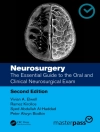The second edition of this key resource provides a broad and fundamental overview of basic cardiovascular (CV) hemodynamic principles with a focus on clinical assessment of CV physiology. Extensively updated, the book includes new coverage on noninvasive hemodynamic assessment and the effects of selected interventions on CV hemodynamics. It provides an introduction to the basic concepts such as preload, afterload, myocardial contractility, and cardiac output. Subsequent chapters examine the effects of interventions such as vasodilators, beta blockers, pressor agents, inotropes, and different forms of invasive circulatory support. The book also focuses on various methods of hemodynamic evaluation including echocardiography, CT/MRI, noninvasive hemodynamic assessment, and cardiac catheterization. The book concludes with a discussion of proper diagnosis, evaluation, and management of patients using hemodynamic data on a variety of specific disease states.
An invaluable contribution to the
Contemporary Cardiology Series
, the
Second Edition of
Cardiovascular Hemodynamics: An Introductory Guide is an essential resource for physicians, residents, fellows, medical students, and researchers in cardiology, emergency medicine, critical care, and internal medicine.
Table des matières
Part I. Components of Myocardial Performance .- Chapter 1. Preload.- Chapter 2. Afterload.- Chapter 3. Contractility.- Chapter 4. Cardiac Output.- Part II. Effects of Selected Interventions on CV Hemodynamics .- Chapter 5. Renin Angiotensin Aldosterone Axis Modulators and Other Vasodilators.- Chapter 6. Beta Blockers and Calcium Channel Blockers.- Chapter 7. Pressor Agents, Pure Inotropes, Mixed Function Agents.- Chapter 8. Recently Approved Agents to Improve Outcomes in Heart Failure.- Chapter 9. Invasive Circulatory Support – IABP, IMPELLA, LVAD as Destination Therapy.- Part III. Methods of Hemodynamic Evaluation .- Chapter 10. Key Clinical Findings.- Chapter 11. Echocardiography.- Chapter 12. CT/MRI.- Chapter 13. Non-invasive Hemodynamic Assessment.- Chapter 14. Cardiac Catheterization – RHC/LHC.- Part IV. Specific Hemodynamically Compromised Situations .- Chapter 15. Tamponade.- Chapter 16. Constriction / Restriction.- Chapter 17. Valvular Heart Disease –Including Cases / Issues of TAVR, Mitral Clip.- Chapter 18. Pulmonary Hypertension.- Chapter 19. Acute Decompensated Heart Failure.- Chapter 20. Intracardiac Shunts.- Chapter 21. Shock.- Chapter 22. Intracoronary Hemodynamics.
A propos de l’auteur
Arman T. Askari, MD, FACC
Founder, Premier Health Advocates Clinical Associate Professor of Medicine
Consulting Staff, Cleveland Clinic
Teaching Faculty, University Hospitals Cleveland Medical Center
Adrian W. Messerli, MD
Associate Professor of Medicine Medical Director, Cardiac Catheterization Laboratory
Gill Heart Institute
University of Kentucky












